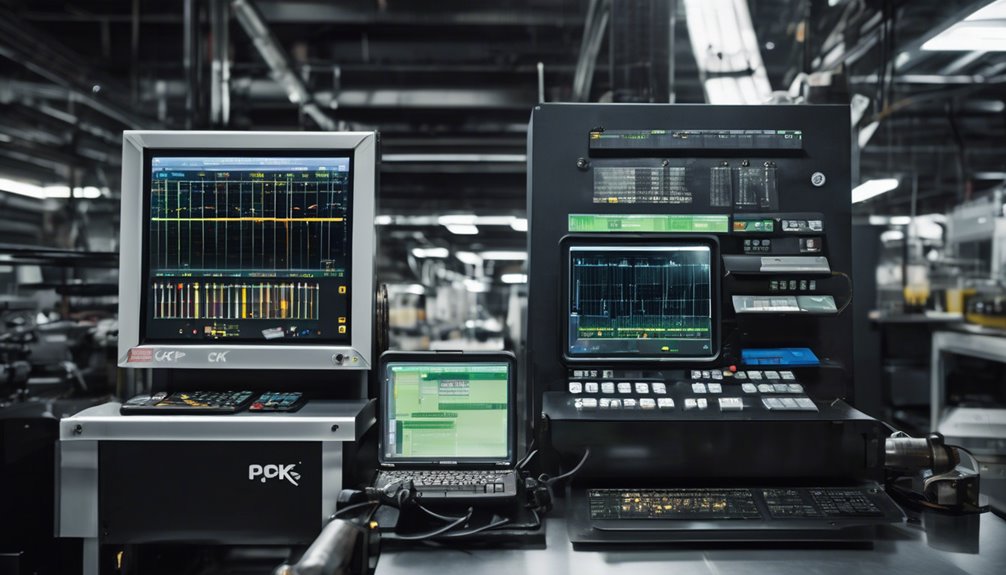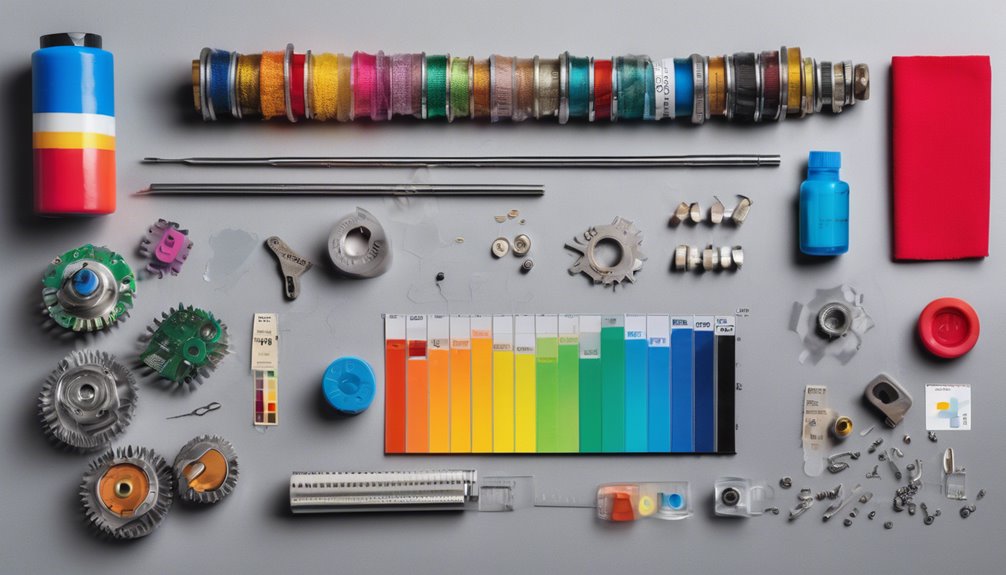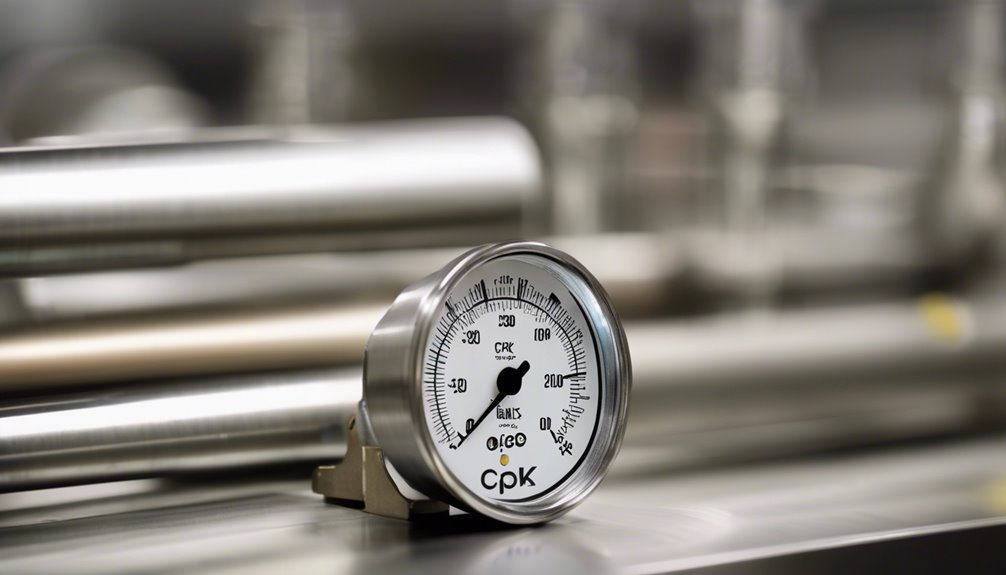Cpk values play a crucial role in assessing how well your manufacturing processes meet quality standards. Understanding these metrics can help you pinpoint areas that need improvement. With a minimum acceptable level set at 1.33, you might wonder how your processes stack up. What factors influence these values, and how can you enhance them for better outcomes? Let's explore the significance of Cpk values and what they mean for your operations.
What Are Cpk Values?

Cpk values, or process capability indices, measure how well a process can produce output within specified limits. Essentially, they tell you how close your process is to its target while considering the natural variability in your production.
You calculate Cpk by comparing the distance between the process mean and the nearest specification limit to the process's standard deviation. A higher Cpk value indicates a more capable process, meaning it can consistently produce products that meet specifications.
Typically, a Cpk value of 1.33 or higher is desirable in many industries. Understanding these values helps you identify areas for improvement, ensuring that your processes remain efficient and effective while minimizing defects and variations.
Importance of Cpk Values in Quality Control
Understanding the importance of Cpk values in quality control can significantly enhance your production processes.
Cpk values offer insight into how well your manufacturing processes meet specifications, allowing you to identify areas needing improvement. By monitoring these values, you can ensure that your products consistently meet quality standards, reducing defects and waste. This not only boosts customer satisfaction but also strengthens your brand's reputation.
Additionally, high Cpk values indicate a stable process, which can lead to lower production costs and increased efficiency. Ultimately, leveraging Cpk values helps you make informed decisions, streamline operations, and foster a culture of continuous improvement.
Embracing this metric can transform your approach to quality control and elevate your overall performance.
How to Calculate Cpk Values

To calculate Cpk values effectively, you'll need to gather data on your process performance and the specifications set for your product.
Start by determining the mean (average) and standard deviation of your process measurements. Next, identify the upper and lower specification limits (USL and LSL).
With these values, calculate the process capability index (Cpk) using the formula:
Cpk = min[(USL – mean) / (3 standard deviation), (mean – LSL) / (3 standard deviation)].
This formula helps you assess how well your process is performing relative to the specifications. A higher Cpk indicates better process capability.
Finally, ensure you regularly update your data to maintain accurate Cpk calculations for continuous improvement in quality control.
Understanding Specification Limits
While evaluating process performance, grasping specification limits is crucial for ensuring product quality. Specification limits define the acceptable range for a product's characteristics, such as dimensions or performance metrics.
These limits consist of upper and lower bounds, which you need to meet to satisfy customer expectations and regulatory requirements. Knowing these limits helps you identify whether your processes are capable of producing consistent results.
If your process falls outside these limits, it indicates potential quality issues that must be addressed. By regularly reviewing and understanding these limits, you can make informed decisions about process improvements and adjustments, ultimately enhancing product quality and customer satisfaction.
Interpreting Cpk Values: What Do They Mean?

Cpk values serve as a critical metric in assessing how well a process meets specification limits. When you interpret these values, you get insight into process capability.
A Cpk of 1 means your process is just meeting specifications, while a value above 1 indicates better performance. If your Cpk is below 1, it suggests that your process isn't capable of consistently producing within the desired limits, which could lead to defects.
Ideally, you'd aim for a Cpk of 1.33 or higher, as this reflects a robust process with minimal variation. Understanding these values helps you identify areas for improvement and make informed decisions to enhance product quality and reliability.
Factors Affecting Cpk Values
Several factors influence Cpk values, making it essential to understand their impact on process capability.
First, the variability of your process plays a crucial role; high variability can lead to lower Cpk values.
Next, the specification limits you set significantly affect Cpk. If your limits are too tight or too loose, it can skew the results.
Additionally, sample size matters; larger samples typically provide a more accurate representation of the process.
Don't forget about measurement system accuracy; if your tools aren't precise, your Cpk calculations will be off.
Lastly, operator skill and consistency can also affect results, as human factors can introduce variability into the process.
Cpk Values Across Different Industries

Understanding Cpk values is crucial for various industries, as they reflect the capability of processes to meet specifications effectively.
In manufacturing, high Cpk values indicate that products are consistently produced within tolerance limits, minimizing defects.
In the automotive industry, for instance, Cpk values help ensure parts fit together seamlessly, enhancing safety and performance.
In healthcare, these values can indicate the reliability of medical devices, crucial for patient safety.
The food and beverage sector relies on Cpk values to maintain quality and consistency in products, ensuring compliance with health standards.
Strategies to Improve Cpk Values
To enhance Cpk values effectively, you should focus on optimizing your processes through a combination of statistical analysis and practical adjustments.
Start by collecting and analyzing data to identify variations in your processes. Use tools like control charts to monitor stability and pinpoint areas for improvement. Implement process improvements by adjusting machine settings, refining workflows, or investing in better training for your team.
Engaging employees in continuous improvement initiatives can also foster a culture of quality. Encourage open communication and feedback to identify issues early. Additionally, leveraging hypothesis testing can provide valuable insights into process changes and their effects on variability.
Regularly review your Cpk metrics to assess the impact of your changes, and don't hesitate to iterate. By applying these strategies, you'll see your Cpk values rise, leading to enhanced product quality and customer satisfaction.
Common Misconceptions About Cpk Values

While many professionals recognize the importance of Cpk values in measuring process capability, several misconceptions can lead to misinterpretation and poor decision-making.
One common belief is that a high Cpk always indicates a good process. In reality, a high Cpk doesn't guarantee that the process meets customer requirements; it merely suggests potential.
Another misconception is that Cpk values are static. They can change over time as processes evolve, so continual monitoring is essential.
Some also think Cpk alone is sufficient for process evaluation, but it should be used alongside other metrics for a complete picture.
Tools and Software for Cpk Analysis
Several powerful tools and software options are available for Cpk analysis, making it easier to assess process capability efficiently.
You might consider using statistical software like Minitab or JMP, which offer built-in functions for calculating Cpk values and visualizing data through control charts. Excel also has capabilities for Cpk analysis through its data analysis toolpak and formulas.
Online calculators can provide quick Cpk calculations, but they may lack advanced features. Whichever tool you choose, ensure it meets your specific needs and integrates well with your existing processes.
Familiarize yourself with the software's functions, so you can interpret results accurately and make informed decisions to improve your processes effectively.
Conclusion
In summary, understanding Cpk values is crucial for maintaining high-quality standards in your manufacturing process. By effectively calculating and interpreting these metrics, you can pinpoint areas for improvement and enhance product consistency. Remember, a higher Cpk means better performance, so don't shy away from implementing strategies to boost these values. By fostering a culture of continuous improvement, you'll not only reduce defects but also elevate your overall product quality. Keep striving for excellence!

